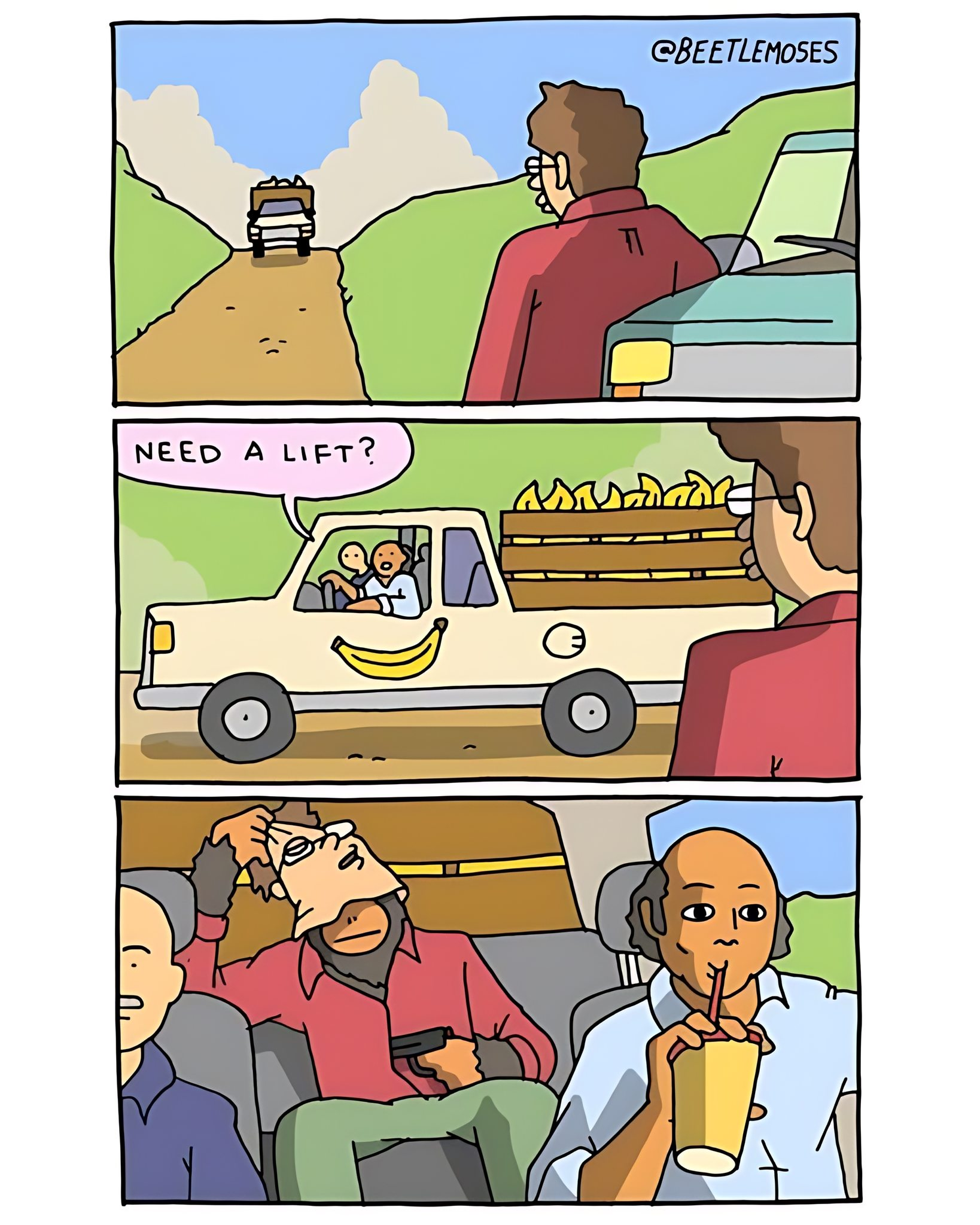this post was submitted on 27 Sep 2024
876 points (98.2% liked)
Comic Strips
12607 readers
5032 users here now
Comic Strips is a community for those who love comic stories.
The rules are simple:
- The post can be a single image, an image gallery, or a link to a specific comic hosted on another site (the author's website, for instance).
- The comic must be a complete story.
- If it is an external link, it must be to a specific story, not to the root of the site.
- You may post comics from others or your own.
- If you are posting a comic of your own, a maximum of one per week is allowed (I know, your comics are great, but this rule helps avoid spam).
- The comic can be in any language, but if it's not in English, OP must include an English translation in the post's 'body' field (note: you don't need to select a specific language when posting a comic).
- Politeness.
- Adult content is not allowed. This community aims to be fun for people of all ages.
Web of links
- !linuxmemes@lemmy.world: "I use Arch btw"
- !memes@lemmy.world: memes (you don't say!)
founded 1 year ago
MODERATORS
you are viewing a single comment's thread
view the rest of the comments
view the rest of the comments

Fair, but the restoration is a pittance compared to what the herds used to be like. Granted, I wouldn't want to step out of my house and be trampled by a bison because there were so many of them, but still, it was a tremendous upset to a natural system, and systematic genocide to boot. Nothing much to like about how it all happened.
I read an interesting hypothesis a few months ago that the vast herds of bison were actually due to indigenous Americans being killed off by disease due to European settlers. They were no longer managing the land, so the grasses took over and the bison population exploded.
Obviously, there were still far more bison than there are today, but possibly not the massive herds of thousands that colonists reported seeing on their way west.
That's an incorrect hypothesis. Tall grass prairie, while definitely manipulated by indigenous people, doesn't really require management; it's the climax community for the biome. Further, fringe areas, like parkland, actually encroach on grasslands, not the other way around.
Grasses are disturbance specialists, and prairie has a natural and short fire cycle that maintains this disturbance. Take away the disturbance and you get woody species coming in on the fringe areas. In this regard, First Nations would burn parkland to create more area for grassland. If their population were declining, the lack of management would result in less bison habitat, not more.
E: I'm hilariously lost with the original comment - everyone point and laugh please. Lmao.
Praires absolutely do require management. Floods and fires can and do lead to critical endangerment of plants and animals.
Overgrazing wildlife also need to be controlled with predators who in turn often need to be contained to prevemt damage to human settlements or overpopulation leading to periods of death and disease for the animals.
In theory if you have well suited animals to fill each role, wide open replacement habitats for migrating to in emergency, and no invasive pest problems; it could be self sufficient, but thats pretty much never going to be the case.
I disagree.
Floods and fire can impact ecosystem composition at a local or regional scale, but these components are entirely necessary for ecosystem renewal and diversity. As parts of an ecosystem are disturbed, it opens niche space for early seral plants. Fire cycles can vary substantially even grasslands.
The reason these systems need human management now is because they have been highly disturbed, and the whole system is out of whack. Roughly 2-5% of the tall grass prairie remains. The overgrazing and invasive pests/plants issue you touch on is anthropogenic in origin, not so much in undisturbed systems.
Ok